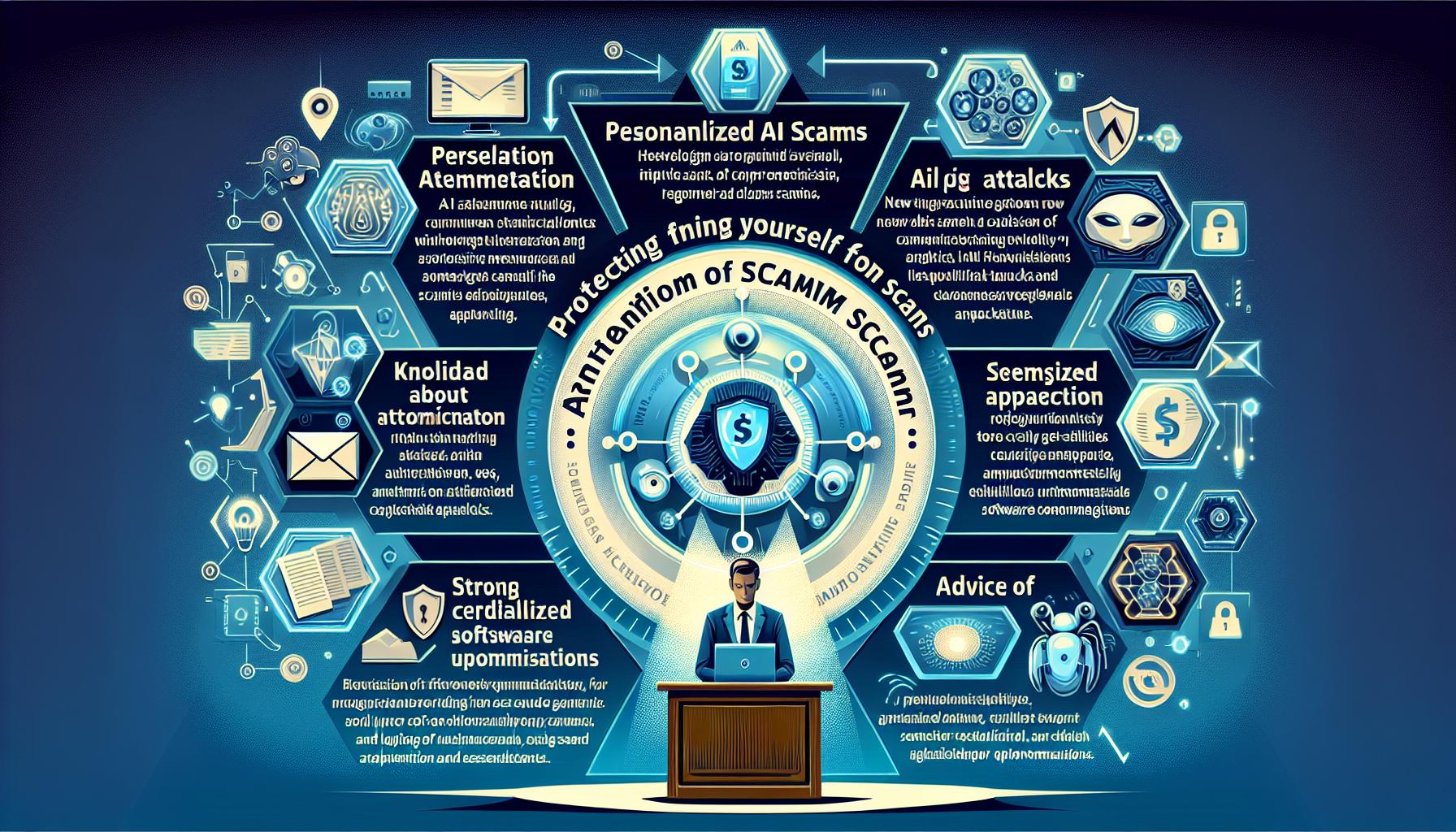Safeguarding Yourself from Advanced AI-Driven Scams: Key Strategies and Insights

Introduction
As technology advances, the world grapples with both its opportunities and its vulnerabilities. One of the darker aspects of technological progress is the sophistication of online scams. The advent of Artificial Intelligence (AI) has given scammers unprecedented tools to personalize, scale, and conceal their fraudulent activities. This article aims to arm individuals with the knowledge and strategies to protect themselves from these advanced AI-driven scams.
Sophistication of Modern Scams
Gone are the days when online scams were easily identifiable. Modern scams have progressed far beyond simple tactics like opening suspicious email attachments or sending money to so-called Nigerian princes. With AI, scammers can now gather vast amounts of data and execute attacks with high precision. They can create profiles on their targets, understanding personal dislikes, preferences, and behaviors, making the scams much more believable.
AI-driven scams can mimic the style and tone of any individual or organization, adding layers of authenticity. For example, an email appearing to come from a trusted colleague or a familiar brand can be generated, complete with personalized messages tailored to the recipient. Such sophistications can deceive even the most tech-savvy individuals.
AI-Driven Personalization
One of the most alarming advancements in modern scams is their level of personalization. With AI, scammers can tailor their attacks based on the data they collect, making them incredibly hard to detect. Personal information scraped from social media, public databases, and hacked accounts can be used to craft highly believable scams.
For instance, a scammer might use A.I. to generate a phishing email that references specific details about your job, family, or recent activities. This kind of personalization makes the scam much more convincing, increasing the likelihood of success. The targeted individual might lower their guard due to the apparent familiarity and relevance of the message.
Scale of Attacks
AI not only makes scams more convincing but also more scalable. Traditional scams required manual effort, limiting the number of potential victims a scammer could target. However, A.I. enables scammers to automate and scale their operations, targeting thousands, if not millions, of individuals simultaneously.
For example, A.I. algorithms can quickly generate and send personalized phishing emails to vast numbers of people. Similarly, AI-powered bots can engage with victims in real-time on social media platforms, mimicking realistic interactions to gain trust and extract sensitive information. This scalability makes AI-driven scams a significant threat, as they can reach and deceive a larger population with minimal effort.
Types of AI-Driven Scams
Several AI-driven scams are currently prevalent:
- Phishing Emails: Personalized emails that appear to be from legitimate sources, tricking recipients into revealing sensitive information.
- Deepfake Scams: AI-generated videos or audio recordings that convincingly mimic real people, often used to manipulate or deceive the target.
- Social Media Scams: A.I. bots that create fake profiles or interact with users to extract personal information or spread malware.
- Automated Call Scams: AI-powered systems that can make numerous calls, adjusting the script based on the recipient's responses to extract information or money.
Counteracting AI-Based Scams with AI
Interestingly, A.I. can also be used by cybersecurity professionals to combat AI-driven scams. Here are some ways A.I. can be leveraged to enhance cybersecurity:
- Behavioral Analysis: A.I. can analyze user behavior patterns to detect anomalies that may indicate a scam or breach.
- Threat Detection: A.I. can scan emails, messages, and online interactions for red flags, alerting users to potential threats.
- Predictive Analysis: A.I. can predict potential scam targets by analyzing past attacks and current trends, allowing proactive countermeasures.
- Automated Responses: A.I. can automate responses to potential scams, blocking suspicious communications and actions in real-time.
Early Warning Signs of AI-Driven Scams
Recognizing the early warning signs of an AI-driven scam can help individuals protect themselves. Here are some indicators to watch for:
- Unsolicited Communication: Be wary of unexpected emails, messages, or calls, even if they appear personalized and credible.
- Urgency or Pressure: Scammers often create a sense of urgency, pressuring you to act quickly without thorough verification.
- Unusual Requests: Requests for sensitive information, money, or actions that seem out of character should raise suspicion.
- Inconsistencies: Look for inconsistencies in the communication, such as unusual language, tone, or details that don't add up.
- Verification Issues: Difficulty in verifying the legitimacy of the communication through trusted sources can be a red flag.
Conclusion
AI-driven scams represent a growing threat in the digital landscape. Their sophistication, personalization, and scalability make them challenging to detect and counteract. However, by staying informed about new scam tactics, employing robust cybersecurity measures, and remaining vigilant for early warning signs, individuals can protect themselves from falling victim to these advanced scams. Additionally, leveraging A.I. for cybersecurity can help counteract the malicious use of AI, creating a safer online environment for everyone.
By understanding the nature of AI-driven scams and adopting proactive measures, one can significantly reduce the risk of becoming a target and safeguard personal and financial information from cybercriminals.

 ™
™

